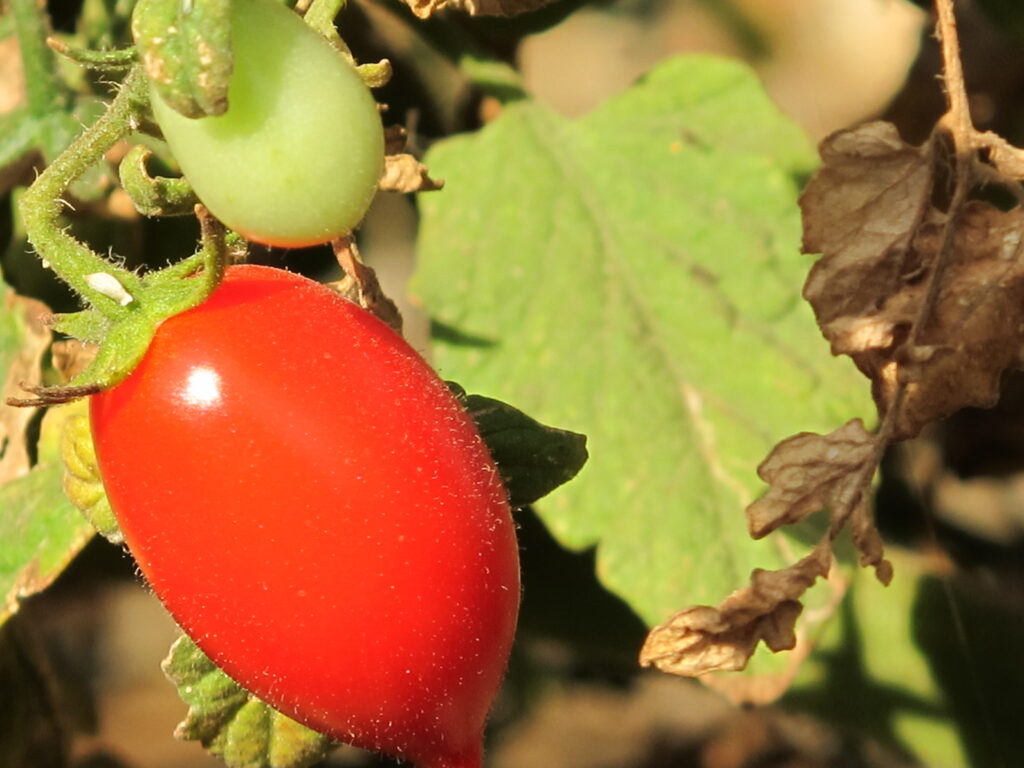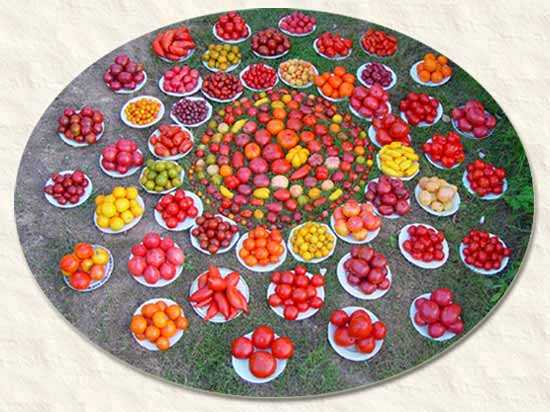 In honor of summer and the abundance of dairy products it brings, Puah and Oded of Meshek 42 in Tal Shachar are expanding their product selection to offer two new cheeses for your palate – Tzfati and Pecorino.
In honor of summer and the abundance of dairy products it brings, Puah and Oded of Meshek 42 in Tal Shachar are expanding their product selection to offer two new cheeses for your palate – Tzfati and Pecorino.
Those who are not yet acquainted with Puah and Oded or visited their charming farm are welcome to visit their FB page, but by all means, go pay them an actual visit. Thursdays from 4 PM, Meshek 42 opens its pens to introduce you to their goats. At the same time, you can purchase dairy products, honey, olive oil and additional outstanding products from other farms. We heartily recommend it!
As for the cheeses, here’s Puah discussing the newcomers:
Tzfati Cheese – Fresh and refreshing, semi-hard, and produced from our goats’ milk. Other ingredients include: our homemade yogurt, vegetable-based cheese making enzymes, and coarse salt. Estimated fat content: 12-13%. Date of production appears on the label. Lasts approximately 4 days.
We prepare the cheese one day before delivery and pack it on the morning you receive it. Each 250-gram package costs 28 NIS.
Pecorino-Style Hard Cheese – Originally produced from ewe’s milk, but we make it from our very own goat’s milk. Over the process of production, we add our homemade yogurt, and vegetable and salt-based cheese making enzymes. Estimated fat content is 20-30%, depending on the aging period. Our pecorino is aged 3-12 months, with the aging period indicated on the package. Each 250-gram package costs 48 NIS.
Order via our order system
————————–
 Tamir from the Golan Heights has renewed Chubeza’s honey stock, and you may now order 1.5 kg jars from his excellent wildflower honey. Tamir, a fourth-generation Ethiopian beekeeper, raises his bees in small apiaries with hives dispersed throughout the Golan Heights. Thus, the bees get their nectar from a broad range of lovely flowers.
Tamir from the Golan Heights has renewed Chubeza’s honey stock, and you may now order 1.5 kg jars from his excellent wildflower honey. Tamir, a fourth-generation Ethiopian beekeeper, raises his bees in small apiaries with hives dispersed throughout the Golan Heights. Thus, the bees get their nectar from a broad range of lovely flowers.
The honey is presently fresh and therefore in liquid form. And, because it is not heated or processed in any way, the honey tends to solidify over time (especially when the weather gets cold). Sweet, healthy, and high quality!
Order via our order system
_________________________________
What’s Round, Juicy and Red All Over?
Over the past week, we have been experiencing a flood of tomatoes. Our bushes are yielding up a storm of these sweet red ‘uns. Another one of those summer surprises, and a great one at that!
Here at Chubeza we grow tomatoes in various ways: in the open field, on low bushes covered by black nets for shade, trellised and covered as well by a dense shade net (cherry tomatoes), and even in tunnels (tomato bushes) stretched on a string, trellising high. The tunnel, too, is covered with a net, but well-ventilated so the tomato does not suffer a heat stroke. To salute these wonders, now ripening in large quantities, we dedicate this week’s Newsletter.

Let’s start with the family tree: the tomato belongs to the selenium family, along with fellow family members the eggplants, peppers, potatoes and… tobacco. Of course, there are many others in the extended family, including wild and cultivated ornamental plants totaling over 2,800 different species. The tomato is a tropical plant originating in Central America. The world’s first tomatoes probably grew in today’s Peru and Ecuador, where they were cultivated before migrating to Mexico to be raised by the Aztecs, who gave them the name tomatel. The habitants of America raised the tomato and realized its value. The Spanish were impressed by its beauty and brought it to Europe in the 16th century. Tomatoes of those times were yellow, thus the origin of the name pomodora– a golden apple in Italian, which became pomo dei Mori– the apple of love. The Arabic name bandora probably derives from the Italian name. We will discuss the Hebrew name soon.
In the beginning, when the tomato was first brought to Europe, it was raised only as an ornamental plant. The women of 16th century haute couture adorned their hair with tomato flowers for special occasions. Yet health experts of the time warned against the fruit, which they considered toxic. The golden tomato may have been forgotten, if not for two 18th century Italian priests who brought the red variety from South America to grow in their yard. Here, in southern Italy, red tomatoes met their first great success among the peasants. (The more I write about vegetables, the more I realize that the peasants were the wisest of them all, ready and willing to try out many new vegetables. Thanks to them, we enjoy great vegetables today.) The first tomato sauce mentioned in writing was in 1778 by a Neapolitan abbot who recommended it as a sauce for meat and fish (not yet pasta or pizza). The 19th century belongs to the tomato: it was discovered worldwide and also immigrated to our country, with the help of French monks.
It is hard to imagine a kitchen without tomatoes, specifically the Mediterranean kitchen with its shakshuka, s’chug, Italian pasta and pizza sauces, as well as being essential for Spanish, Province, Greece and Turkey sea and land foods. It’s hard to believe that history mounted the tomato atop European tables only 200 years ago, and that it was completely unknown in the Western world before Columbus made his grand discovery…Even so, the tomato was not so warmly received at its initial debut, and an aura of controversy surrounds it till today. Reading about the tomato, you can find mention that it is lofty and exalted, healthy, essential and important, or that it is poisonous, harmful and even dangerous. So… where are we? Are we poisoning you with tomatoes every week, or saving your souls? Alas, the story of the tomato is neither black nor white. (It is, of course, red.)

So, the tomato belongs to the selenium family. Some of the plants in this family are in fact poisonous and pose a health danger. This poison is due to alkaloids that exist in different parts of the plant. Alkaloids are organic compounds of carbon, hydrogen, nitrogen and oxygen, the source of which is usually in plants. They are considered to have an influence on the function of nerves, muscles and the digestive system. The problematic alkaloid in the selenium family is the solanium, which gave it its name, and exists in various levels in family members. The quantity of solanium in edible selenium plants is minute, and is reduced by 40-50% with cooking, which is why most of us can consume it without any problem. And yet, macrobiotic nutrition is very cautious of the selenium family, which is considered most problematic when the vegetables are green (green tomatoes, green peppers, etc.) or raw.
On the other hand, tomatoes contain lycopene, the pigment that gives them (as well as watermelons) their red color, considered to be a color that induces appetite and desire. Lycopene is a very strong antioxidant. Scientists claim that it is one of the “predators” of free radicals which are very active in nature (free radicals are the harmful substances that accelerate the processes of aging and disease). Lycopene is beneficial in battling various types of cancer, particularly cancer of the prostate, lungs and pancreas. Together with other components of the tomato, it also lessens the danger of heart disease and stroke. Lycopene’s ability to act as an antioxidant also contributes to the health of eyes, brain cognition and protection against sun damage. The tomato is rich in vitamin C, which protects against heart disease, stroke, cancer and probably cataract and complications of diabetes.
It was the red color that prompted Rav Kook to suggest a “pure and clean” Hebrew name for the vegetable: admonia, in an attempt to find an alternative to the name suggested by Yechiel Michel Pines, who worked with Eliezer Ben Yehuda. He had suggested translating Liebesapfel (love apple) from the German to agvaniah, from the root ע.ג.ב- “to love, desire.” Ben Yehuda, too, was not particularly pleased with the immodest title, and suggested the name badura, Hebraizing the Arabic bandura. Over various decades, the agvaniah and badura co-existed, each with its own fan club, when in the end, love and desire won out, and agvaniah it was.
Most of the tomatoes we know are indeed red, but the full picture shows a colorful, wide, rich range of varieties. In most agricultural farms, a slim variety of tomatoes are grown, but there are organizations and people who work to uphold the heritage of the many varieties of tomatoes (as well as other plants and vegetables). See this Mandala from the French Kokopelli Foundation website (thank you, Yiftah, for the link):

In Israel, the tomato suffers from certain maladies for which remedies have not yet been found. First and foremost, it is attacked by the yellow leaf curl virus, which is transferred by tobacco moth aphids and destroys the plants at their peak. The disease dries up the plant, preventing it from growing and bearing fruit. In an open area like ours, this is a real problem. Originally, tomatoes are annual plants, and in places free of disease, some tomato plants can grow and produce fruit for more than a year. This is also one of the main reasons that most of the tomato growth in the country (as is common across the globe) takes place in closed areas, enabling farmers to protect the plant from disease. Thus over the past few years here at Chubeza, we have developed growing structures (a hothouse and tunnels) where we raise most of our tomatoes, learning from year to year how to improve. So far, so good (touch wood….).
During these prolific weeks of red riches, we will be regaling you with this yummy delight, expanding quantities in your boxes, and sometimes even sending cherry tomatoes and regular tomatoes at the same time! We recommend you take a look at our recipes for preserving tomatoes: drying them, making sauces, and even tomato jam. Bon appetite!
Enjoy a great summer week,
Alon, Bat Ami, Dror, Yochai and the Chubeza team
___________________________________
WHAT’S JOINING THE TOMATOES IN THIS WEEK’S BOXES?
Monday: Lettuce, parsley/coriander, tomatoes, cucumbers, cherry tomatoes, eggplant, melon, New Zealand spinach/Swiss chard, corn, onions. Small boxes only: sweet red peppers.
Large box, in addition: Thai lubia/okra/zucchini, leeks/scallions, nana mint, slice of pumpkin/butternut squash.
Wednesday: Lettuce, parsley/dill, tomatoes, cucumbers, cherry tomatoes, eggplant, melon/sweet red peppers, New Zealand spinach/Swiss chard, onions, slice of pumpkin/butternut squash. Small boxes only: corn.
Large box, in addition: hai lubia/okra/, leeks/scallions, nana mint/basil, zucchini/ Amoro pumpkin/spaghetti squash.
And there’s more! You can add to your basket a wide, delectable range of additional products from fine small producers: flour, fruits, honey, dates, almonds, garbanzo beans, crackers, probiotic foods, dried fruits and leathers, olive oil, bakery products and goat dairy too! You can learn more about each producer on the Chubeza website. On our order system there’s a detailed listing of the products and their cost, you can make an order online now!
